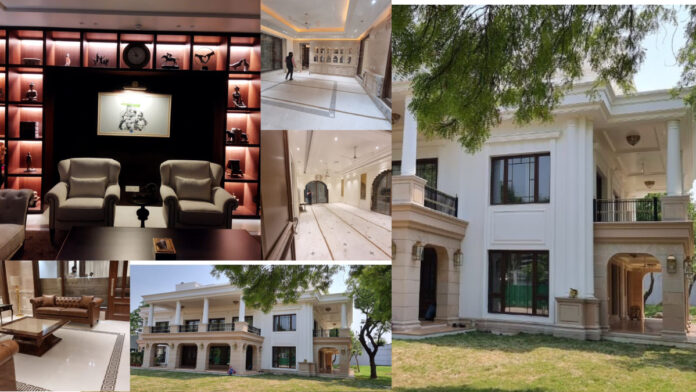New Delhi, 19th August. Once hailed as the beacon of simplicity and transparency in Indian politics, Arvind Kejriwal, the former Chief Minister of Delhi, now finds himself at the center of a political and personal irony. The leader, who rose to prominence championing anti-corruption and minimalist values, is set to vacate the luxurious official residence he painstakingly renovated with a staggering sum of taxpayer money. What was meant to be a reflection of his political stature has now become a symbol of excess—one he won’t even have the chance to fully enjoy, as legal troubles linked to his government’s now-scrapped excise policy force him to step down and potentially face jail time.

This fall from grace is a stark reminder of how quickly the tide of public perception can turn when a leader’s actions contradict their stated principles. Kejriwal’s “Sheesh Mahal,” once his dream home, is now a symbol of broken promises and political downfall.
The Controversy Around the Renovation
In 2023, a major political controversy erupted when Kejriwal began an extensive renovation of his government bungalow. Official figures reported that ₹45 crore was spent on this renovation, but the Congress later alleged the real cost was much higher—around ₹171 crore. According to Congress leaders, the AAP government had to buy additional flats for officials who were displaced due to the expansion of Kejriwal’s residence complex. This figure sparked widespread criticism and painted a contrasting image of a leader who had once championed a simple and austere lifestyle.
Critics accused Kejriwal of double standards, highlighting how a man who rose to power by positioning himself as a clean, anti-corruption crusader, had, in their view, indulged in unnecessary luxury at the expense of the public. His opponents in the BJP and Congress ridiculed him for living in a “Sheesh Mahal” (glass palace), a term that became symbolic of the dissonance between Kejriwal’s public image and the lifestyle he allegedly adopted.
The Legal Pressure and Imminent Move
While the renovation itself had been a focal point of public debate, it was the cases related to the now-scrapped excise policy of Kejriwal’s government that led to a more dramatic development. Kejriwal’s implication in these cases, alongside other senior AAP leaders, culminated in his resignation and impending incarceration. Reports suggest that Kejriwal may vacate the residence within the next 15 days, complying with the procedures following his resignation.
Conclusion
Arvind Kejriwal’s exit from his palatial bungalow underscores the irony in his political career. He began as an anti-corruption leader, fighting against the opulence and excesses of traditional politicians, but his legacy is now marred by the controversies surrounding his residence and governance. The discrepancy between his professed ideals and the reality of his actions may leave a lasting impact on how he is remembered in Indian politics.
Kejriwal’s eventual departure from his “Sheesh Mahal” is symbolic. It represents not only the fall from power but also a departure from the idealistic image he once cultivated. Whether this marks the end of his political journey or a temporary setback remains to be seen, but the controversy over his residence will likely continue to shadow his public image.




